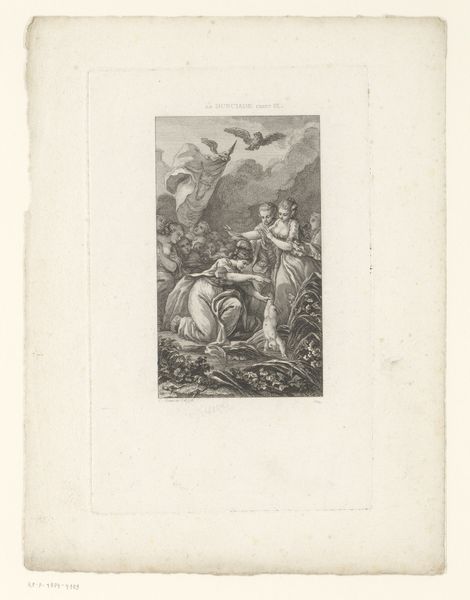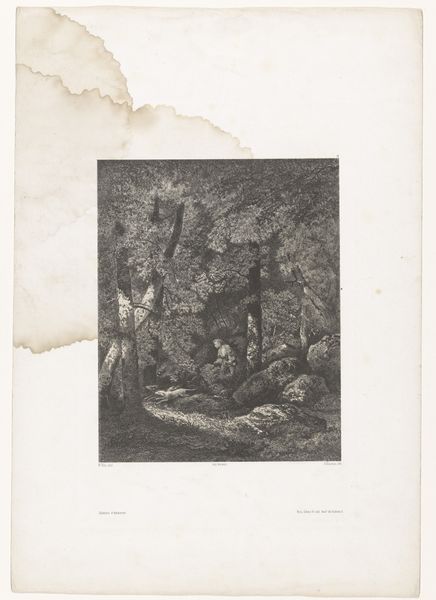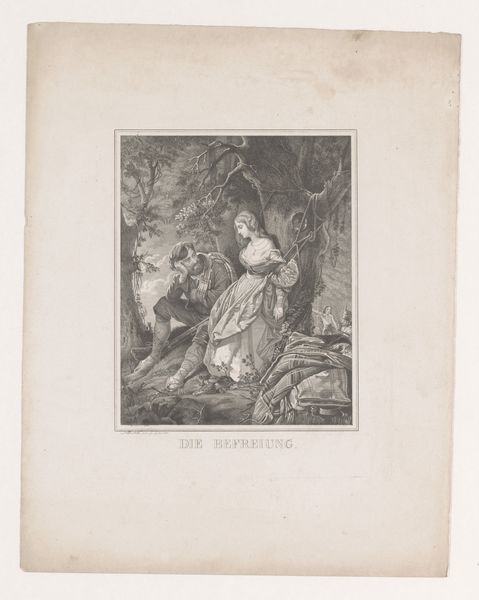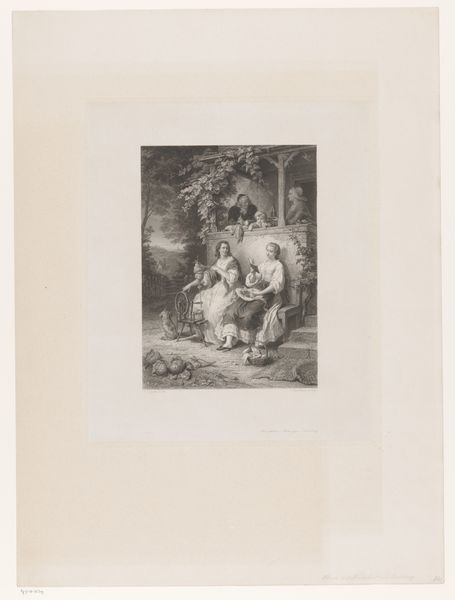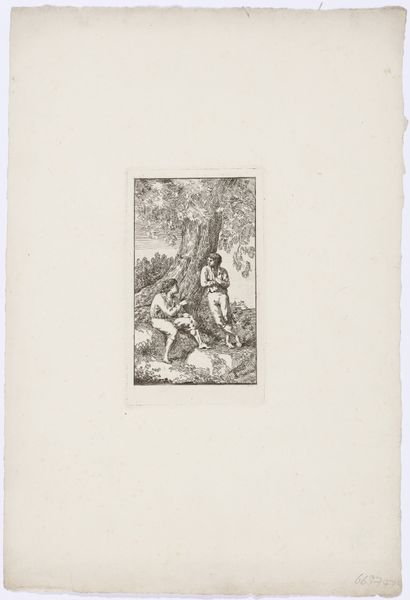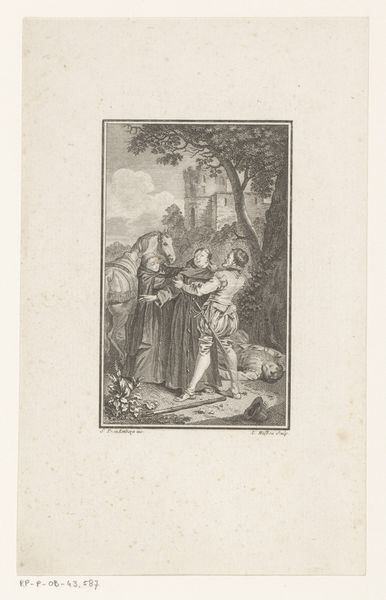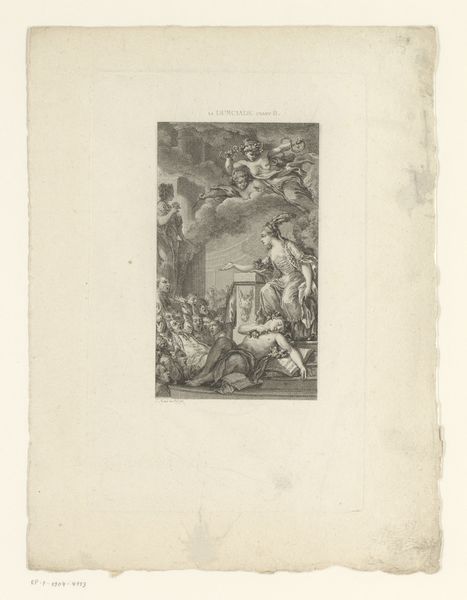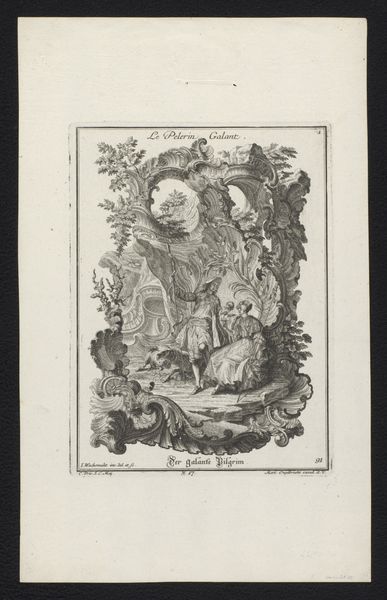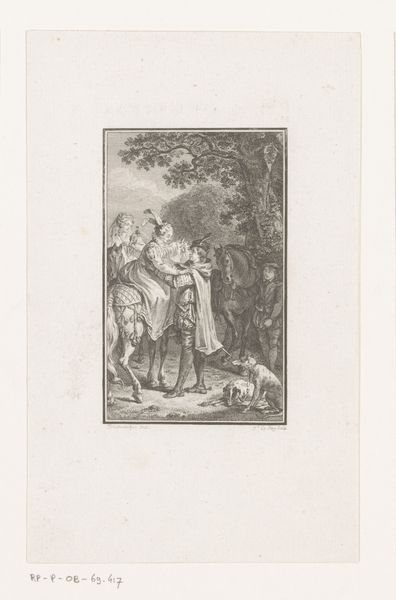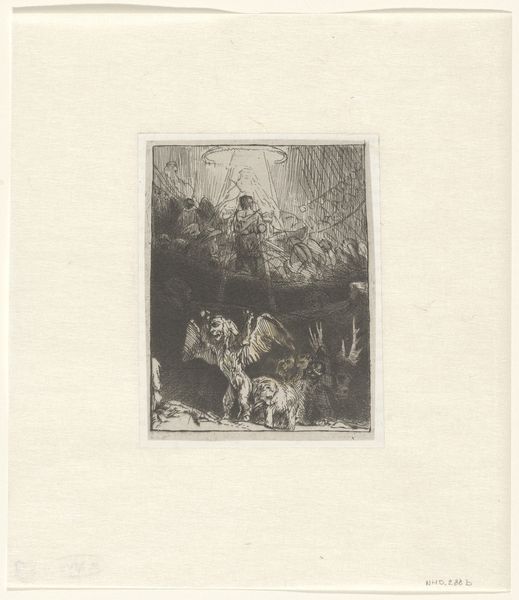
drawing, print, etching, paper
#
drawing
#
narrative-art
# print
#
etching
#
landscape
#
paper
Dimensions: 180 × 112 mm (image); 290 × 218 mm (sheet)
Copyright: Public Domain
Curator: Here we have Rodolphe Bresdin's "The Butterfly and the Pond" from 1868. It’s an etching and drawing printed on paper, currently held at the Art Institute of Chicago. Editor: It strikes me as remarkably dense, almost claustrophobic, despite depicting an expansive landscape. Curator: That density is certainly achieved through Bresdin's masterful use of line and texture. Observe how he creates depth and form with meticulous cross-hatching. Consider, too, how the intricate detail guides your eye through the composition, from the foreground pond, teeming with life, to the distant, ethereal mountains. Editor: The detail, in that context, almost reads like a kind of visual overload – as though the natural world were overwhelming the delicate human interventions within it. I’m thinking about the time Bresdin was working; the era of radical new sciences and technologies and changing social norms. Curator: An interesting reading. Certainly, there is an element of the fantastic present. The symbolic use of the butterfly is noteworthy; the insect acts as an emblem, bookending the pictorial space between the heights and depths of the mountains. In traditional readings, the butterfly symbolises metamorphosis and transformation; its inclusion might suggest an exploration of personal or societal change. Editor: Yet the visual weight of those butterflies, which resemble heraldic emblems, feels like a visual judgment placed *upon* the land, and not springing *from* it. A judgement about the state of transition. What power dynamic might that represent? How does the work reflect its era's imperial gazes on the non-Western world? Curator: I appreciate how your perspective brings contemporary issues to bear on historical contexts. Indeed, interpretations will change with the prevailing social contexts of our world. However, what remains steadfast is that we can return again and again to the work to seek new insights and, most importantly, simply contemplate its beauty and its intriguing nature. Editor: Right. It invites further interrogation and conversation, ensuring its ongoing relevance.
Comments
No comments
Be the first to comment and join the conversation on the ultimate creative platform.
